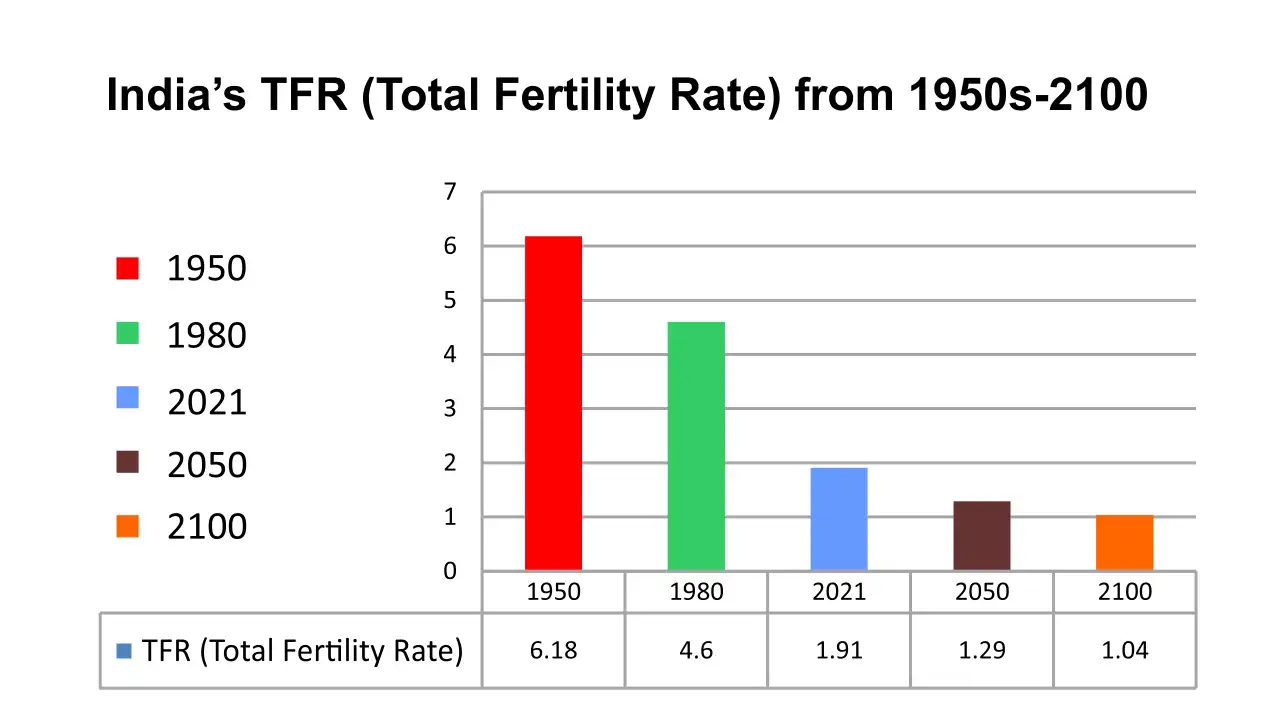Fall In Global Fertility Rates: India’s Shortfall By 2050.
By: Geetanjali
As per the new study published by Lancet on Wednesday, March 20, 2024. Global Total fertility rate in all 204 countries have declined from an TFR of 5 children each to 2.1 TFR (Total Fertility Rate) from the year 1950-to-2021.
As per the reports, out of 204 countries which were included in the research 155 countries (which is 76% of total countries) will have TFR lesser than the RFR (Replacement Fertility Rate) by 2050, among which India’s TFR will reduce to 1.29 in 2050. By 2100, it is predicted that 198 (97%) out of 204 countries’ TFR will be below their replacement rate.
Lancet has warned India on its decreasing fertility rate, the reports predicted India’s TFR will fall down to 1.29 in 2050, below the replacement fertility rate of 2.1. In the 1950s average fertility rate per woman was 6.18 which has now come down to 1.91 in 2021.
Predicted data is based on the survey, and other data collected in between 1950s-to-2021 as a part of the Global Burden of Diseases, Injuries, and Risk Factors Study (GDB).
| India’s TFR (Total Fertility Rate) from 1950s-2100 | |
| Year | TFR (Total Fertility Rate) |
| 2100 | 1.04 |
| 2050 | 1.29 |
| 2021 | 1.91 |
| 1980 | 4.60 |
| 1950 | 6.18 |
Effects of declining TFR (Total Fertility Rate):
– Increased number of ageing population, which will require more government funding in giving pensions, increased medical expenses, and old age homes.
– Shortage of working population.
– Increased gender imbalance, because of preference of a specific sector.
Reasons behind decreasing fertility rate:
Poonam Mutreja Executive Director of Population Foundation of India (PFI) explains the reasons for falling TFR as follow:
– Increased cost of living leading to increased cost of raising children.
– Increasing number of educated women.
– Increase in the number of career oriented women, which is leading to delayed marriages.
– Improved and easy access to contraceptives and family planning.
– Also change in societal norms, people opting for a small family rather than the traditional big families.
FAQ
Ques- What is the difference between TFR (Total Fertility Rate) and RFR (Replacement Fertility Rate)?
Ans- To put simply, TFR (Total Fertility Rate) refers to the total average number of children a woman will have in her entire reproductive lifetime. On the other hand RFR (Replacement Fertility Rate) refers to the replacement rate which is required to replace the previous population.
Ques- What is India’s Total Fertility Rate (TFR) in 2021?
Ans- As per Lancet’s report published on March 20, 2024 TFR of India is 1.91, while the RFR is 2.1.



